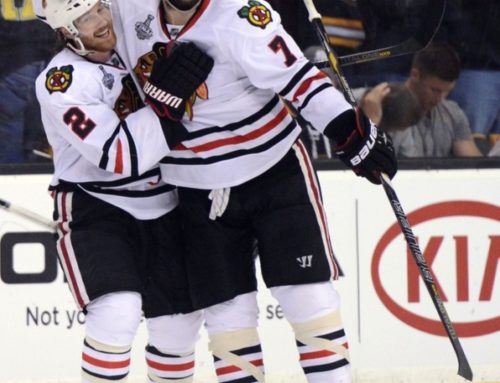
Find out the pros and cons to different types of fantasy drafts and which one works best for your league
For many fantasy hockey fanatics, the last month represented the most exciting period in the NHL calendar. Despite the obvious fact that there's, you know, no hockey being played, the annual entry draft followed swiftly by the opening of the free agent frenzy injects an electricity into the air that is unmatchable. And for the nerds like me that populate many a fantasy league, the team building process is every bit as intriguing as anything that actually happens on the ice.
So too with hockey pools. Whether your league's draft coincides with that of the NHL, or you wait until early fall to make your picks, no day is as hotly anticipated as draft day.
With armchair GMs around the world having just witnessed the proceedings in Philadelphia, it seems an appropriate time to give some thought to one of the most fundamental issues faced by any fantasy commissioner: determining the style of draft that is the best fit for your league. There are a number of options, and while we each may have a personal preference, each type of draft has its place. The key is to match the draft style to the unique circumstances of your league.
Below are the four major draft options, with some guidance as to which type of draft may be the most effective for your league.
Box-Style Pools
Many a fantasy player has taken their first steps into a whole new world through a box-style pool. In a box pool, players are segmented into groupings (typically about six players per group, though this varies), and managers select the player in each group that they think will accumulate the most fantasy points, based on the league's scoring system. Generally, every player in each group plays the same position, and players of similar value are grouped together to make the decisions as tough as possible. By its very nature, in this type of pool, players can be owned by more than one manager.
The same holds true in fantasy leagues. This makes the straight draft entirely inappropriate for a one-year league, in which every team begins with an empty roster. If you're going to run a straight draft in a single season league, you might as well award the trophy to the team at the top of the draft order, and forego the draft altogether. Likewise, this style of draft should not be used for the inaugural draft in a keeper league, as it would give the early pickers an advantage that will take years for others to overcome.
However, in an ongoing keeper league that has already played one or more seasons, the straight draft is a good choice. It fulfills the same function as it does in the NHL, giving the weaker teams a chance to improve more quickly, making the strong teams work harder to stay on top, and raising the interest level for everybody.
Snake Draft
The snake draft is a fantasy creation, as I'm not aware of any real life sports leagues that use a snake draft (I'm open to correction on this).
In a snake draft, the draft order "snakes" back and forth each round, so the manager who picks first in Round 1 picks last in Round 2, and so on. The idea is that this equalizes the draft, as the good fortune of landing the first-overall pick is offset by having to wait a very long time for pick number two.
There's a wide variety of opinion on where the advantage lies in a snake draft. Some argue that there's no substitute for superstar talent, and it's best to pick early in Round 1 and take your chances in Round 2. Others prefer drafting late in the order, getting two high end talents but perhaps no superstar. Some like to be in the middle, consistently drafting every 12 picks or so, while others love the back-to-back picks that come from being at the top or bottom of the draft order.
Though it's not without its drawbacks, the snake draft is the best style if you want to avoid any team gaining an obvious advantage based on the draft order. This makes it ideal for a one-year office pool, or the first year of a keeper league.
Player Auction
For something totally different, there's the player auction. Instead of simply choosing players, managers take turns placing players up for bid. Teams are given a set salary cap, and bid on players, with the highest bid winning the player.
This system eliminates draft order from the equation altogether. It gives every manager the chance to land whichever players they want most; they just have to be willing to pay the price. It introduces a new layer of strategy, as managers have to carefully allocate their money. Will you spend big on a few superstars and then fill out your roster with players from the bargain bin, or will you take a more balanced approach?
The major downside is that it can take a long time to complete. The first time I ran an auction, it took more than three times as long as our previous year's draft. This can be mitigated to some extent by making it a silent auction: instead of taking turns bidding until all but one manager drops out, managers are given a few seconds to write down their bid privately. Bids are then revealed simultaneously, and the top bid takes the player.
The auction draft is fun if you've got lots of time and you're in the mood for something different. It's also ideal if you're running a salary cap league in which you set your own player salaries; the winning bid becomes the player's starting salary. But for more casual poolies, the auction may require too much planning or simply take too long.
So, let's discuss: what type of draft have you found to be most effective for your league?





 FLA
FLA CHI
CHI NYR
NYR PIT
PIT L.A
L.A COL
COL CAR
CAR OTT
OTT TOR
TOR NYI
NYI
 MIN
MIN BOS
BOS CBJ
CBJ VGK
VGK
